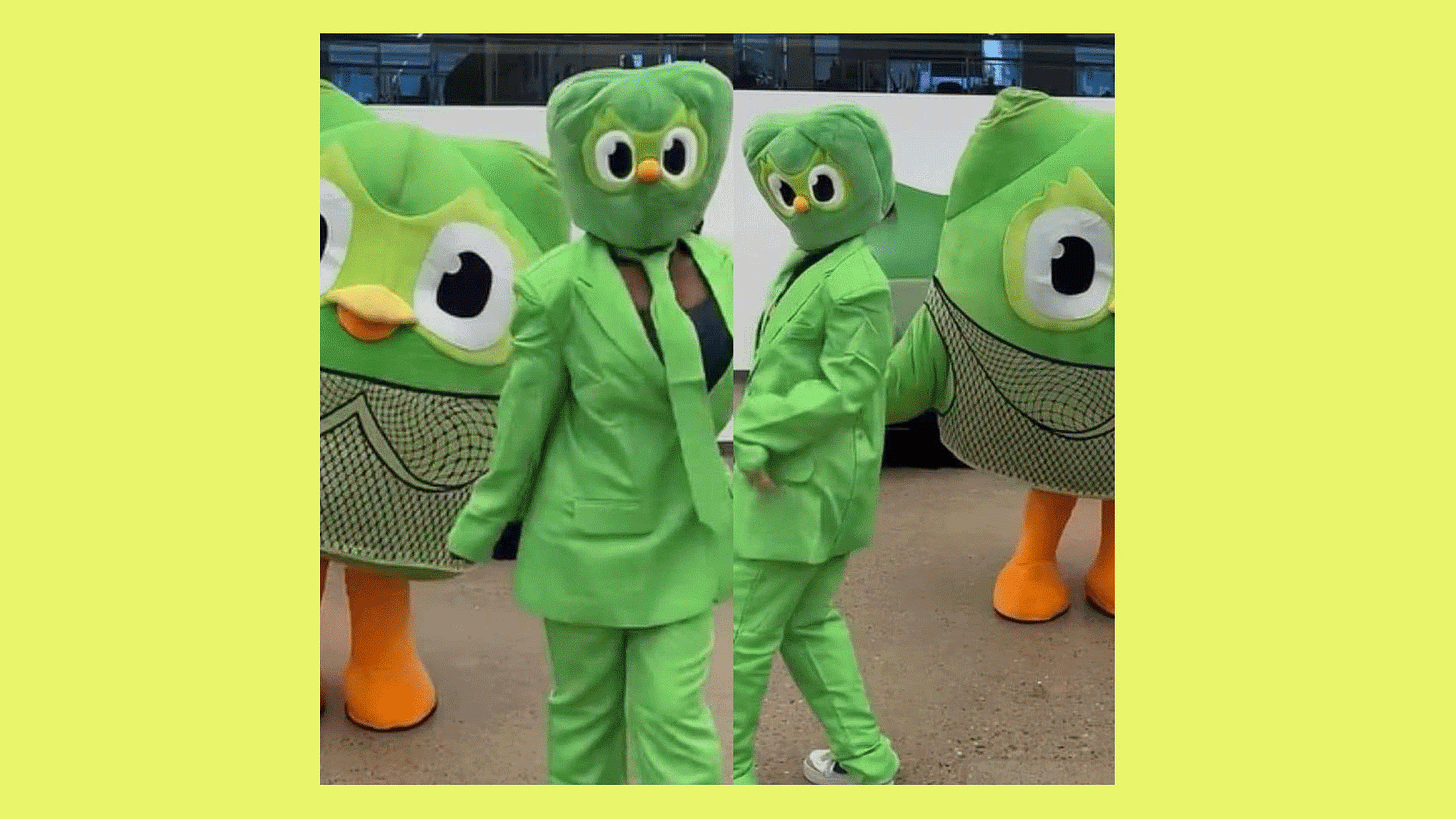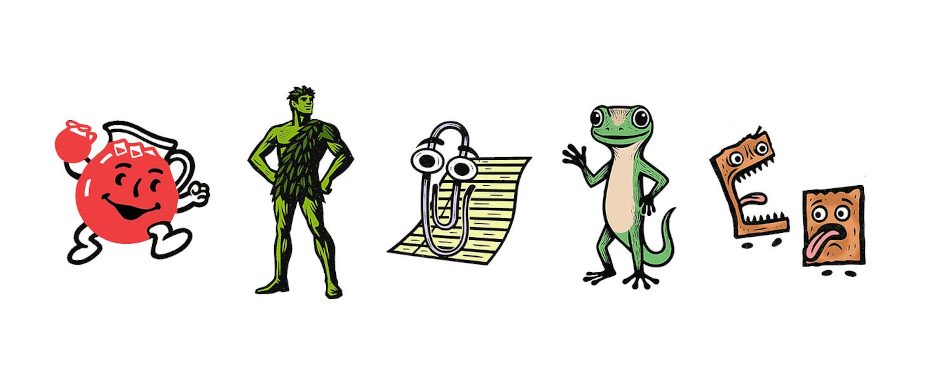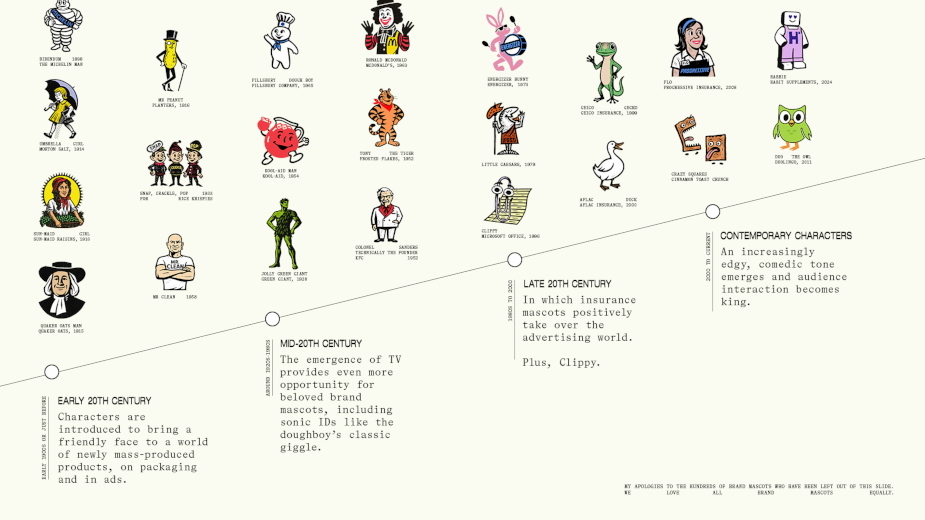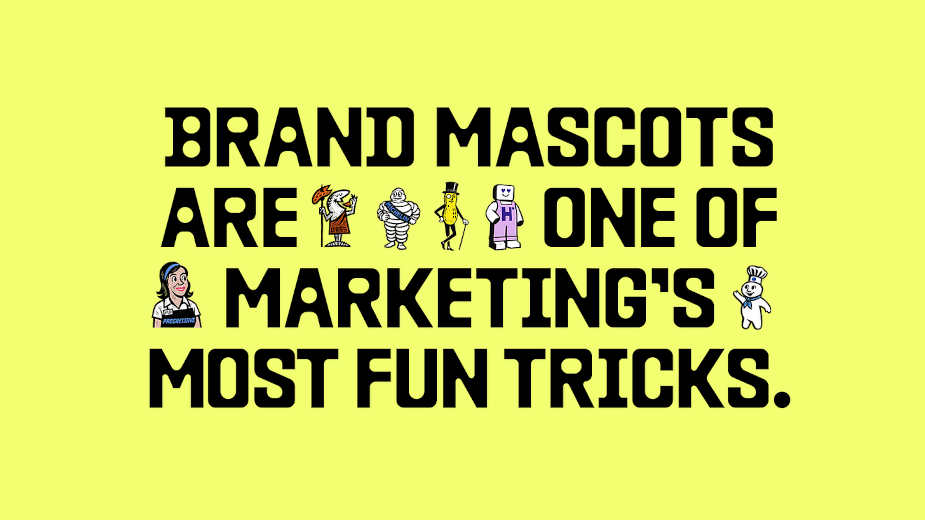
The Age of the Brand Mascot (Again)

Advertising’s oldest trick is back.
From the straightforwardly earnest Quaker Oats Man of the late 1800s to the truly unhinged Duo the Owl faking his death, brand mascots have certainly come a long way.
In this lil state of the mascot union, we’ll explore the origins of brand mascots, their business and brand impact, and how to use them effectively for long-term brand-building.
PS — If you find yourself wanting your own brand mascot, you can find my team atTHIS JANUARY polishing our fourth mascot this year and ready to take on our fifth.

Giving faceless corporations a friendly face: the origin of the brand mascot
As factory-produced goods replaced handmade goods by trusted neighbours, companies went on the hunt for a way to make their hordes of newly mass-produced items feel friendly and trustworthy. Their solution? Put a face on it.
Early mascots like the Quaker Oats Man and the Michelin Man helped consumers connect with products produced by total strangers, many miles away.
And it turns out our marketing forefathers were onto something. Brand mascots and characters have been proven to outperform in a variety of categories across demographics, boosting awareness, loyalty, and overall sales. But...why?

Why brand mascots work
1. They’re lovable. Brand mascots bring character to brands. The mascot can embody the brand’s values (like the Kool-Aid Man) or its utter enemy (like Mayhem). Either way, a mascot is easier to root for than a board room full of billionaires.
2. They’re memorable. A multitude of studies have found increased brand recall when using a brand mascot; they’re easier, and more fun, to remember. And familiarity is often good for business (the mere exposure effect is mentioned in some studies as a reason for mascot success).
3. They’re ownable. A strong brand mascot is easier to recall than the brand itself, yet inextricably linked to the brand. 'The Allstate Gecko' just doesn’t have the same ring to it.
4. They’re flexible. Many brand mascots are decades old, sitting across campaigns and executions, interacting with culture as culture evolves.
Stretching a character’s cuteness further, mascot merch is good for business, and great for boosting familiarity and recall. An Aflac duck plushie in your son’s bedroom acts like a tiny little, cuddly billboard with zero media commission ;)
5. They’re sustainable. A good mascot offers a brand the opportunity to tell a larger story, stepping away from performance marketing and sales-driven strategies to build a more holistic, creative, soulful version of the brand.
6. And they’re profitable. In a study by the MPC, mascots were found to increase profit gain by 30.7% over non-mascot campaigns.

Mascots outperform celebrity endorsements
In 2020, IPSOS found that brand mascots are 6x more effective than celebrities at building long-term brand associations.
A brand mascot is an exclusive brand asset. The Colonel only works for KFC. Unless he’s doing a brand collab on KFC’s behalf.
A brand mascot is less risky than a real, live person. Mascots don’t do drugs. Unless it’s on purpose.
A brand mascot can be more affordable. It’s not cheap to create best-in-class brand assets. But in comparison with celebrity fees, anything feels 'affordable.'
The business case for the brand mascot
A multitude of studies have found that campaigns featuring a character consistently outperform campaigns without.
This study from the MPC/Moving Picture Company and Campaign Live (2021) found that campaigns that featured a brand mascot outperformed campaigns without a mascot. Their findings?
Campaigns with a mascot increased market share gain by 36.7%
Increased profit gain by 30.7%
Increased new customer gain by 28.1%
One example? “The Man Your Man Could Smell Like” from Old Spice received 5.9 million YouTube views in its first day, more than Obama’s victory speech in its first 24 hours. Nice job, Wieden 👏
And maybe the most beloved modern mascot, the Geico Gecko, has been credited with moving Geico from 9th in its category to 2nd place since its introduction in 1999. h/t Martin for the quarter-century-long win ✨
Ingredients of a great brand mascot
Make it simple, cute, and clear. The best brand mascots are so closely wedded to their brand that it’s impossible to think of one without the other. Tying the name to the brand can be a good start, but tying its tagline (Pizza Pizza!), or its key personality features (endless energy) to product benefits can add a touch of sparkle.
Consistent spine, flexible executions. Keep core features of the mascot ultra-consistent a-la Byron Sharp. This allows for the flexibility to go wide in terms of execution - the mascot can appear anywhere as long as what they say, how they say it, and how they look remain the same.
Give it a seat in the c-suite. Don’t just use a mascot as a tertiary executional tool. If a character is going to anchor a brand, it should effectively be a member of the c-suite marketing team. When thinking about new campaigns, imagine getting buy-in from your sweet mascot stakeholder to ensure new executions are on-brand for the character.
Commit to the long-term. The brand equity of a mascot only grows with time. If you’re going to commit to the expense of creating a mascot, stick with it to build brand love, memorability, and eventually, nostalgia.
How to measure a brand mascot’s efficacy
1. Measure overall brand awareness. Brand lift studies and both aided and unaided awareness are great metrics for evaluating brand mascots.
2. Test recall with and without the mascot. If the whole team isn’t sold, test non-mascot ads against versions with the mascot in different markets, then compare results.
3. Monitor social sentiment and engagement. If people are talking about it on social, it’s already winning. Tracking sentiment can help dial in the mascot for max efficacy.
4. Stick with it. Mascots are a long-term game. They’ll only get more and more effective with time, media spend, and exposure frequency.

What do you think? Are brand mascots the next big adland trend, or do I just love them too much to think anything different? Let’s talk mascots 💌









